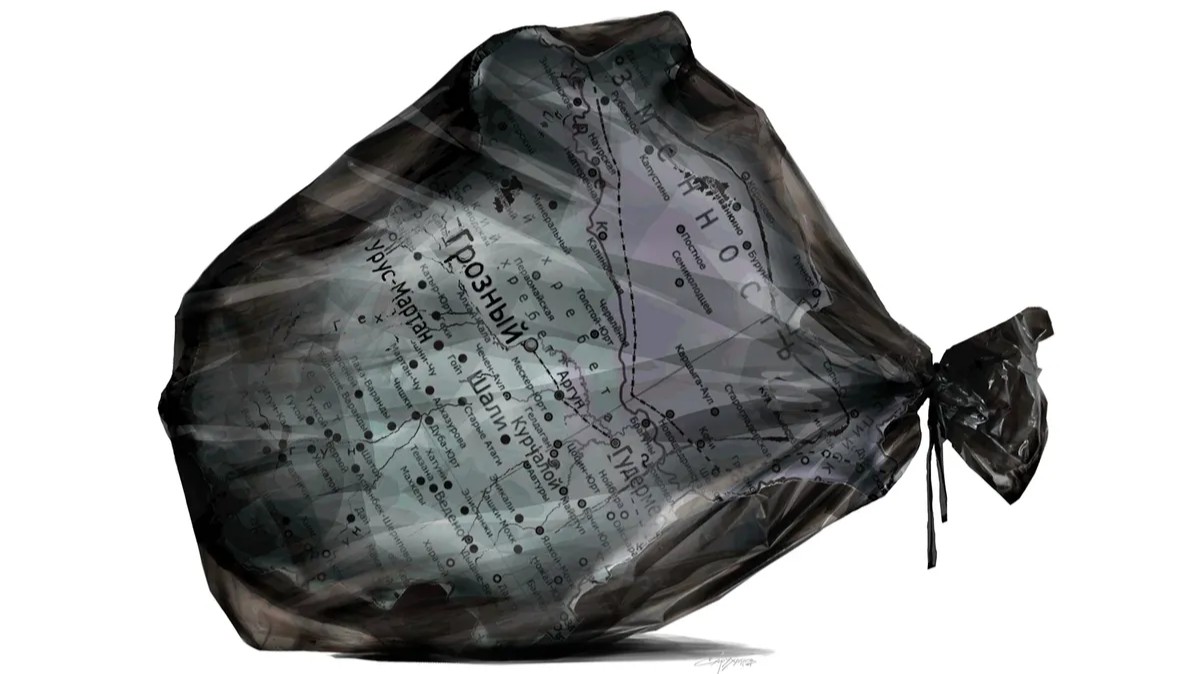Here what’s in store for you this week:
- This week we explain latest rouble trouble and how low the Russian currency might sink;
- We bring forward the tragic history of Zmievskaya Balka and what it says about ignored and neglected memory of the Holocaust in Russia;
- If Ramzan Kadyrov doesn’t have enough enemies — he creates his own. We report on a new terror binge by Putin’s close ally;
- Plus, we explain how the increasing number of Russian weapons in Donbas is part of the Kremlin’s geopolitical gambit.
Rouble Trouble, Explained
Last week, the value of the rouble hit a 14 month low against the U.S. dollar while the value of Russian stocks plummeted against the backdrop of the Kremlin’s military flex at the Ukrainian border. Our economics columnist Igor Nikolayev explains the volatility of Russia’s currency and how likely it is that it will recover.
THE UKRAINE FACTOR. “Geopolitics is shaking the rouble”, Nikolayev writes, “and at the most inopportune time.” It is not so much the threat of invasion that is weakening the rouble, he notes, but the threat of Western sanctions if Russia decides to make an incursion. The U.S. and its allies have all reiterated the threat of severe economic sanctions in the event of an invasion, with President Biden even hinting at punitive measures that would target President Putin personally.
THE OIL FACTOR. The value of Russia’s currency has long been beholden to global oil prices. At the moment, prices are high — about $90 per barrel. Despite this apparent silver lining, Nikolayev writes that “Oil — our everything — has always helped the rouble, but today, alas, it is powerless” against increasing geopolitical tensions. While it is possible that oil prices could rise even further, Nikolayev predicts that they will more likely fall, sending the currency into even more dire straits. Since the world is gradually transitioning to more environmentally-friendly energy sources, he predicts that the decline in oil prices — and therefore of the rouble — will be permanent.
THE AMERICA FACTOR. Beyond the more visible threat of sanctions, U.S. domestic policy is also contributing to the weakening of the rouble. The U.S. Federal Reserve System has announced plans to raise the current rate of 0-0.25% 3-4 times this year in an attempt to combat inflation, which is higher than it has been in the past 40 years. These increases will automatically weaken the rouble.
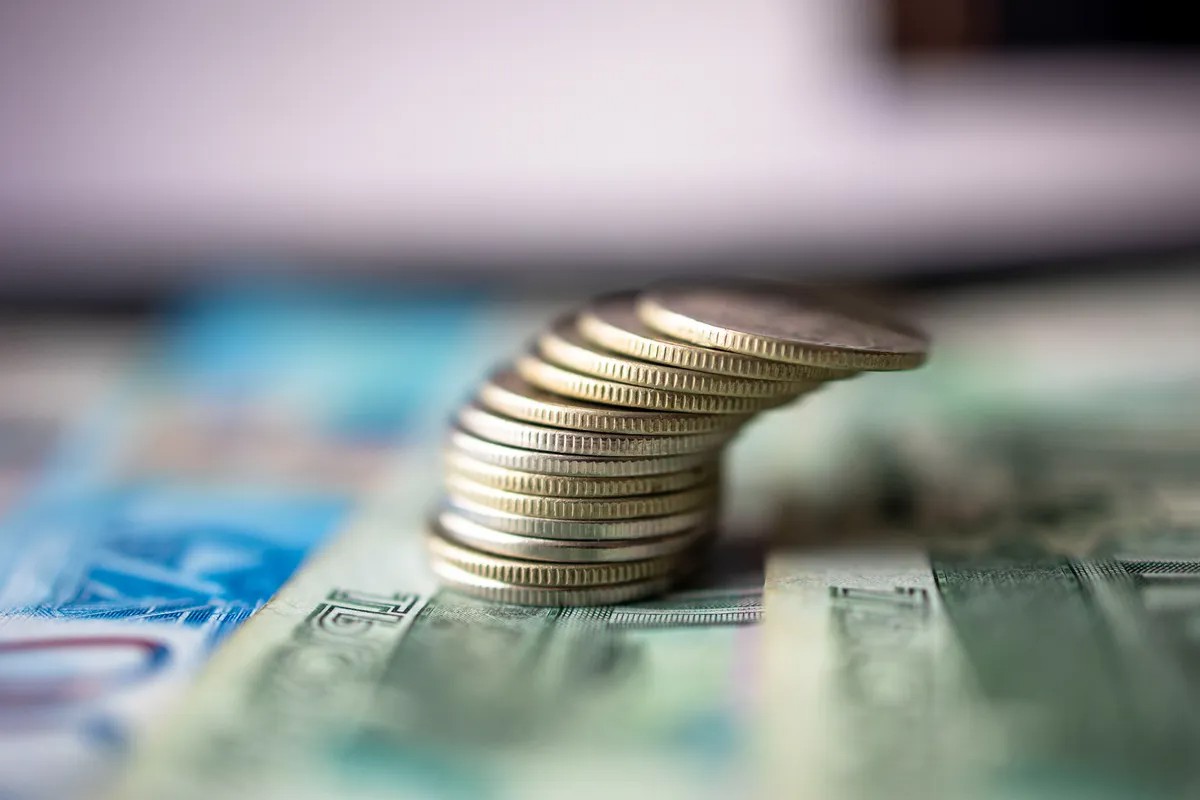
Photo by Arden Arkman / Novaya Gazeta
A GLOOMY FUTURE. While Russia’s national bank does have a number of tools at its disposal — raising its key rate and offering greater incentives to foreign investors, it can do little to assuage the anxiety generated by geopolitical instability.
“The rouble’s prospects are not very good”, is Nikolayev’s gloomy conclusion. A falling rouble means further inflation at a time when citizens’ incomes are depreciating. According to Russia’s Economy Ministry, consumer inflation accelerated to 8.64% as of January 21, up from 8.62% a week earlier. The greater the inflation, the harder it is to afford basic necessities.
BACKSTORY. The rouble has seen marked periods of volatility since the onset of Russia’s invasion of Ukraine in 2014. Overall, the Russian currency is at its weakest point in history. The devaluation spiral dates back to 2015, when invasion of Ukraine, subsequent international sanctions and the oil prices collapse delivered a blow to rouble, which it has never recovered from. The pandemic impact worsened the situation. The weakening of the Russian currency has a negative impact on the country’s poverty problem. Some 21 million Russians are living below the poverty line, with the state-defined minimum wage equating to 10,800 roubles (about $165) a month. Income inequality has been growing in Russia for years. Wages fell for four years straight, from 2014 to 2017, only seeing a minor rise in 2018 after a change in their calculation methodology. After the pandemic, Russian citizens will be about 10% poorer than they were in 2013.
Read Nikolayev’s full analysis here.
The Tragic History of Zmievskaya Balka, Explained
Last Thursday — January 27th — was Holocaust Memorial Day, on which world leaders once again lined up to commemorate the murder of 6 million Jews and vow “never again”. Russia, too, officially commemorates the great atrocity of the 20th century on this day but, as our correspondent Elena Romanova writes, symbolic official statements and actions belie widespread ignorance of the fate of millions of Jews in Nazi-occupied territories of the Soviet Union. Reporting from Zmievskaya Balka in the southern city of Rostov-on-Don, she explains the horror that took place here and how modern Russia fails to adequately commemorate it.
JULY 23, 1942. This was the day on which the Wehrmacht invaded Rostov-on-Don. Along with 18 military divisions, an SS contingent arrived to murder Soviet artists, partisans, and Jews. Rostov had a large Jewish community which swelled as Jews from already-occupied territories sought refuge in the city.
AUGUST 11, 1942: Testimonies rarely differ: people were told to stand on the edge of the gully and then shot; others were ordered to lie in the pit of corpses to be killed or buried alive. They were told that they were being relocated to a settlement out of the city. Once they had rounded up the city’s Jewish population, Nazi forces shot men, women, children, and the elderly. Sickeningly, as Rashka tells us, the Nazis also used paralyzing poison to murder the children before dumping their bodies into the pits.
WE DON’T KNOW HOW MANY WERE KILLED. No one knows for sure how many bodies lie in the deceptively quiet Zmievskaya valley. Vladimir Nikolaevich Raksha, archivist of the Rostov Jewish community and coordinator of the Lost Names project, believes that there are at least 32 thousand. He has been searching for the bodies and names of the dead for over a decade. There are now 4,359 names on the list.
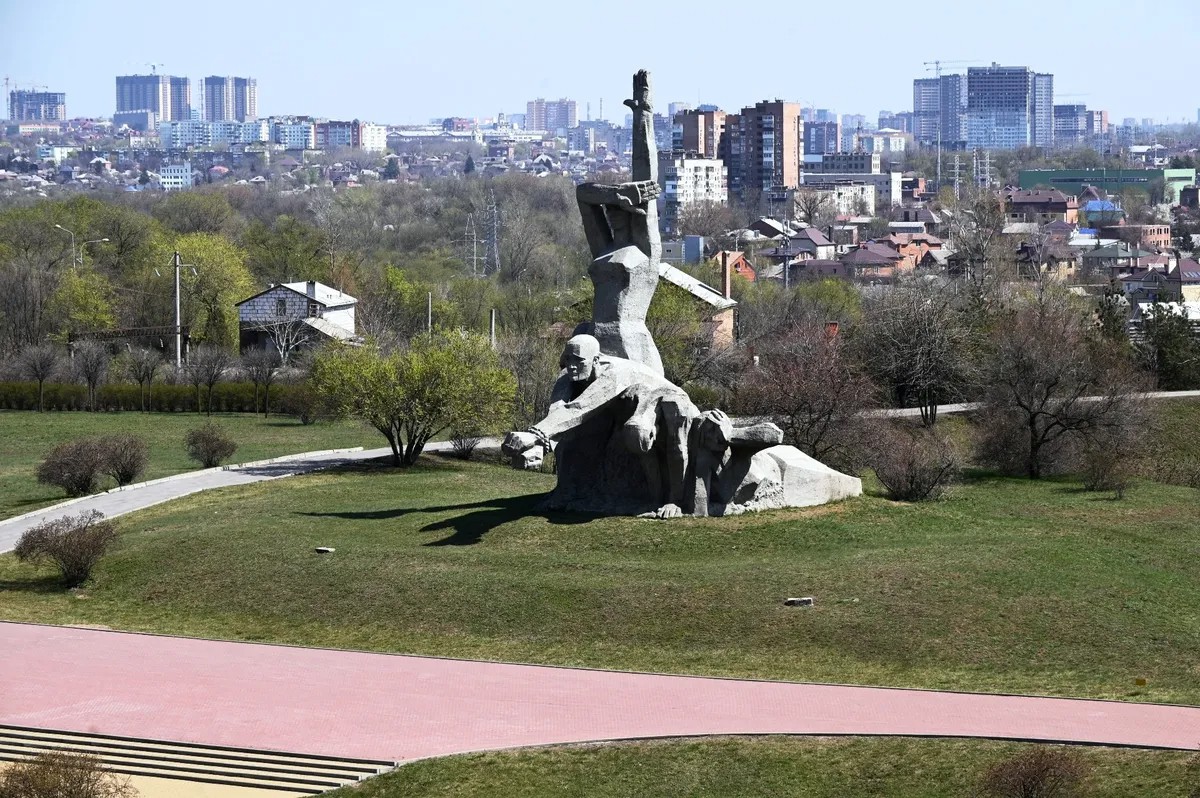
Memorial in Zmievskaya Balka near Rostov-on-Don, Russia. Photo by RIA Novosti
Поддержите
нашу работу!
Нажимая кнопку «Стать соучастником»,
я принимаю условия и подтверждаю свое гражданство РФ
Если у вас есть вопросы, пишите [email protected] или звоните:
+7 (929) 612-03-68
ERASURE BY THE STATE. Almost no Soviet newspapers acknowledged the massacre. The official policy of the Soviet state was that the victims were not killed because they were Jews, but because they were Soviet citizens. After the war ended, authorities intimidated and threatened Rostov’s surviving Jews who sought to commemorate the atrocity.
THE KREMLIN’S WAR ON MEMORY. Official denial continues to this day. Rashka and his colleagues continue to fight for a proper memorial including Jewish symbols. Unwillingness to acknowledge the massacre also exists among ordinary citizens, Rashka points out: “The descendants of these people [those who handed over their Jewish neighbours to the Nazi occupiers] live here today and wear portraits of their ancestors on the Immortal Regiment marches.” Last week, Foreign Minister Sergei Lavrov enforced the erasure of the murder Soviet Jews, proposing a “memorial in Berlin dedicated to all civilian victims of Nazism in the USSR, regardless of their nationality.”
BACKSTORY. Nearly half of Holocaust victims — approximately 2.8 million — were murdered within the borders of the Nazi-occupied territories of the Soviet Union, yet their stories have remained relatively unknown since 1991. Ukraine — then Russian dominion within the Soviet Empire — contained the Soviet Union’s largest Jewish population but antisemitic massacres also took place in the territory of what is now Russia. While the Russian Federation does officially mark Holocaust Memorial Day, little has been done to educate ordinary Russian people about the Soviet Union’s — and Russia’s — history of antisemitism and role in the great atrocity of the 20th century.
Read Romanova’s full report here.
How Ramzan Kadyrov Creates His Own Enemies
We’ve been on this story since last week. But it is getting worse and worse. New terror binge by Putin’s close ally and the ruler of Chechnya automous region Ramzan Kadyrov grows in size and now includes our newsroom, too. This week our own Elena Milashina explains.
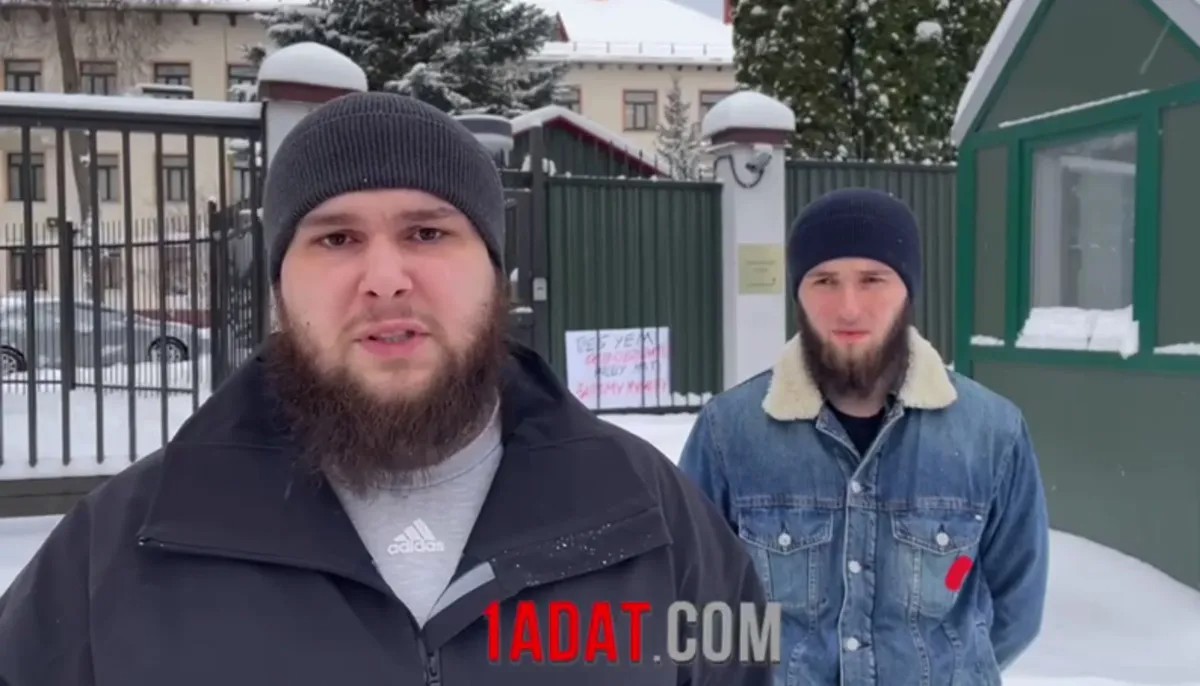
Yangulbayev’s middle son, Ibragim and his brother left Chechnya and fleed from Russia. Abroad Ibrahim established telegram channel Adat1, which became poewrful media opposite to Kadyrov
HOW IT STARTED. At the end of December, five dissident Chechens living abroad — Tumso Abdurakhmanov, Khasan Khalitov, Mansur Sadulaev, Minkail Malizaev and Aslan Artsuev — reported the abduction of their relatives in Chechnya. Abdurakhmanov also suffered a failed assasination attempt by a Chechen killer. This is not the first time Chechen officials reach across regional and international borders to target critics. The same tactic is often used to hunt down victims of LGBTQ+ pogroms or dissident critics on the run for their lives.
IN TOTAL, SEVERAL DOZEN PEOPLE WERE KIDNAPPED IN DECEMBER. Last week a prominent Chechen human rights defender and investigative journalist Abubakar Yangulbayev reported mass kidnappings of his relatives, too. The activist was forced to flee the country, but Kadyrov thugs came after his parents. Milashina has known the family since 2017 when she met with the Yangulbayevs to discuss the persecution that the family had been facing. In May 2016, Saydi Yangulbayev was beaten and forced to write a letter of resignation. He had then appealed to Russia’s Investigative Committee for redress. His request for a criminal case to be launched against his assailants was refused.
HOW IT IS GOING. Last February, the middle and younger sons of Yangulbayev, Ibragim and Baysangur fled abroad. On January 21st this year, their parents, a retired federal judge Saydi Yangulbayev and his wife Zarema Musayeva, were meant to follow suit. The day before they were due to leave Russia, the authorities came for them. The family were in Nizhny Novgorod when Chechen police — with the assistance of the local branch of the Ministry of Internal Affairs — attempted to detain them. Yangulbayev’s status as a federal judge meant that he had criminal immunity so the Federal Security Service for Nizhny Novgorod intervened at the last moment and blocked the use of force against him. His wife, however, did not have the same protection and was taken back to Chechnya by police.
LONG HISTORY OF TERROR TARGETING THE YANGULBAYEVS. In 2015, Yangulbayev’s middle son, Ibragim, had created a Vkontakte group called “Wolves Creed” in which he posted photos of people who had suffered at the hand of the Chechen authorities, as well as mocking Kadyrov’s regime. In retaliation, Chechen regim kidnapped Ibragim and held him in a secret prison where he suffered repeated beatings and torture. Once released, he continued to post and was again detained — this time in a pre-trial detention centre in Grozny. Prosecutors charged him under Article 282 of the Russian Criminal Code which covers extremism and inciting hatred.
DESPITE A LIFE-THREATENING MEDICAL EMERGENCY, AUTHORITIES REFUSED TO CALL AN AMBULANCE FOR HIM. Ibragim’s cellmate passed the information to his relatives who then called the editorial office of Novaya’s editorial office. In turn, we contacted Human Rights Commissioner Tatyana Moskalkova for help, who then contacted the republic’s leadership. Only thanks to this did Ibragim survive. In December 2019 the case against Ibragim was dismissed. Milashina helped him to escape the country. Ibragim used his newfound freedom to establish the Telegram channel “Adat” in April 2020, which covers the abductions, torture, extrajudicial executions perpetrated by the Chechen authorities. Its audience boomed since then.
BACKSTORY. Ramzan Kadyrov has been the Head of the Chechen Republic since 2007 and has gained a reputation for ruthlessness and political repression. He is the son of former Chechen President Akhmed Kadyrov, who was assassinated in 2004. He is a staunch supporter of President Putin, while also building his own power base and personality cult. He is considered by many as the second most powerful politician in the Russian Federation, and has frequently styled himself as the representative of the country’s some 20 million Muslim citizens. Many of those who have dared to oppose him have ended up in prison or murdered. He is, for example, widely believed to be behind the murder of human rights campaigner Natalia Estemirova in 2009. He has also presided over the systematic persecution of LGBTQ+ people in Chechnya, infamously claiming that the republic has “no gay people.”
Bonus Round
Deliveries of modern Russian weapons to the Donbas could be a new escalatory step in the rising tensions with Ukraine, writes Valeriy Shirayayev
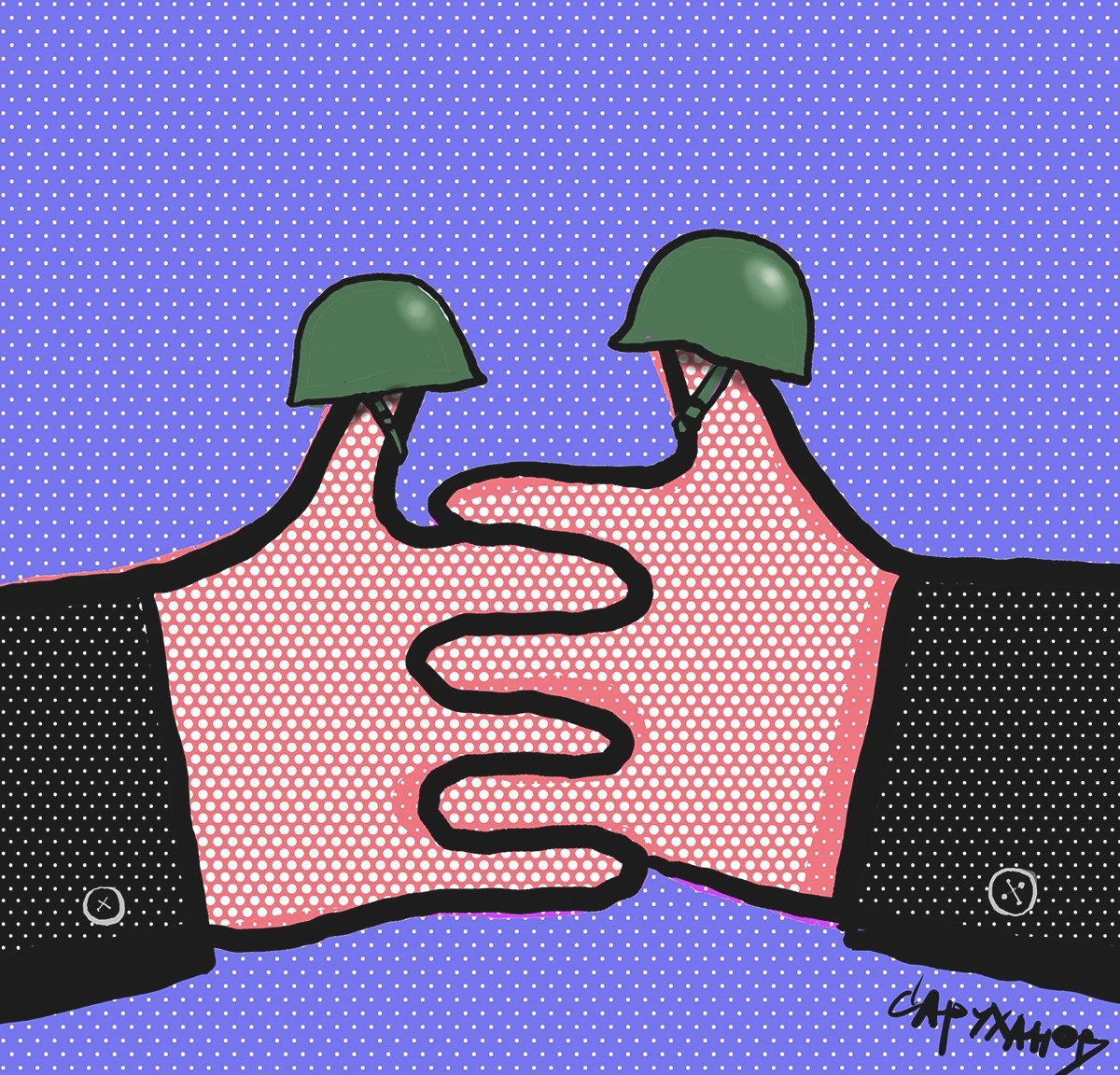
Illustrayion by Peter Sarukhanov / Novaya Gazeta
It is not impossible, Shiryayev writes, that — under the threat of severe sanctions from the West — the Kremlin will secretly agree not to invade Ukraine. This does not mean, however, that it will refrain from military involvement, whether by using long range missiles from its own territory or by supplying weapons to the armies of the so-called Donetsk and Luhansk People’s Republics. They do not stand much of a chance against the Ukrainian military thanks to the weapons sent by Western allies such as the United Kingdom — which sent short range anti-tank missiles — and the United States — which recently sent 300 Javelin missiles. ‘The existence of DPR/LPR statelets as a hotbed of conflict is the only real guarantee for Putin that Ukraine will not join NATO. Therefore, no Kremlin promises can be taken into account here. The Kremlin must preserve these statelets at all costs,’ writes Shirayayev, predicting further pump of Russian weapons to Russian-controlled Eastern Ukraine. He concludes that the situation is escalating to a “very dangerous level”. Direct conflict between Russia and NATO cannot be ruled out.
This newsletter drop is written and edited by several journalists at the Novaya Gazeta newsroom. Please, support our work by promoting our newsletter with #RussiaExplained hashtag on social media.
To keep up with Novaya Gazeta’s reporting throughout the week, you can follow us on Facebook, Twitter, Instagram, and Telegram. Our video content is available on Youtube and don’t forget to visit our website for the latest stories in Russian.
The Novaya Gazeta Team
